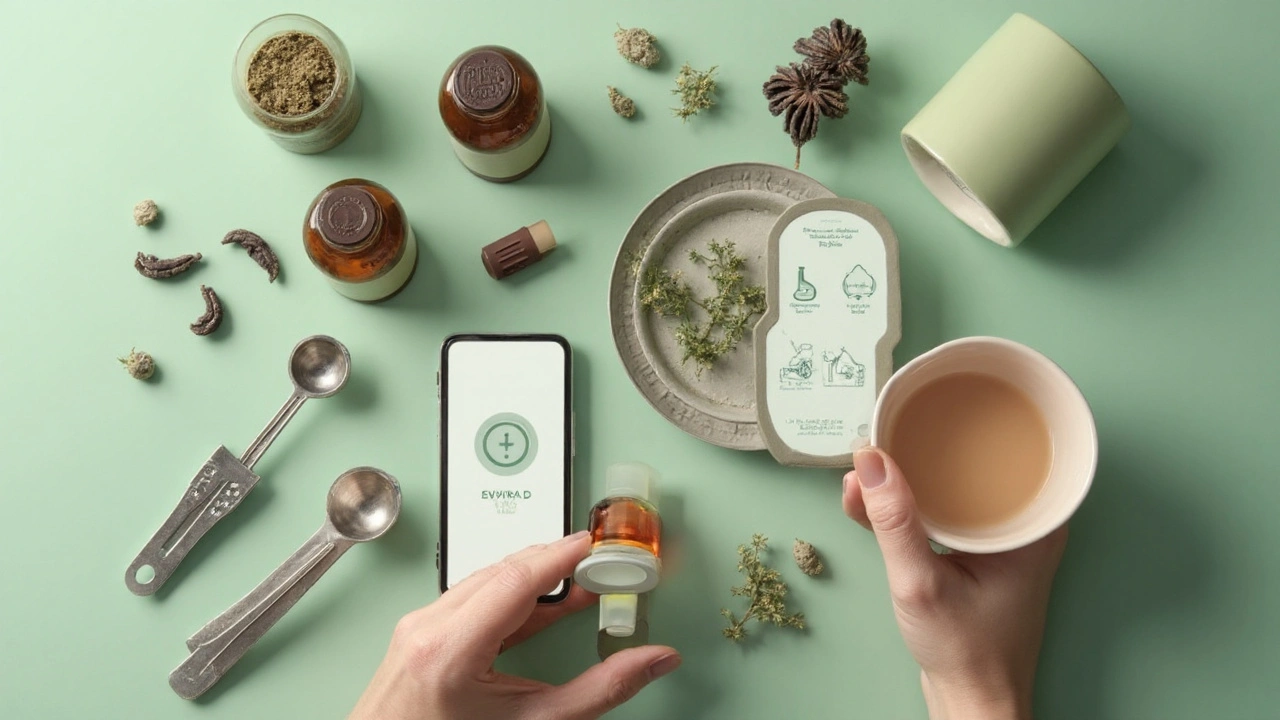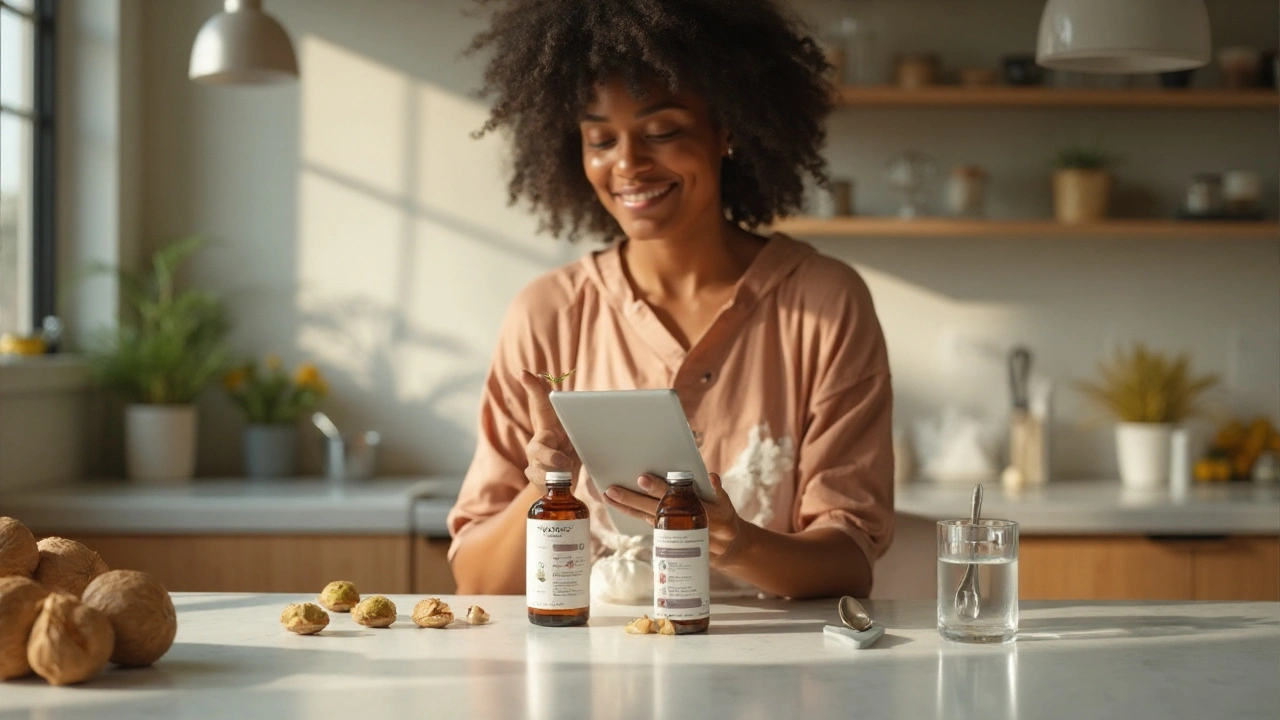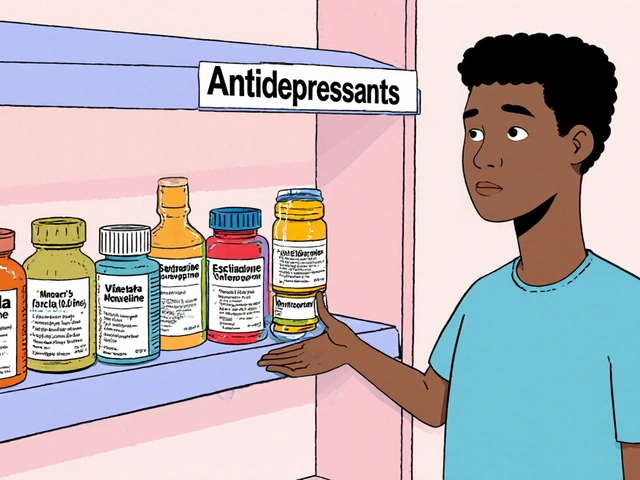Secret cures are rarely secrets. Black walnut pops up in parasite cleanses, antifungal forums, and the odd Reddit thread. The pitch: better gut, fewer bugs, cleaner skin. The reality: it’s a strong herb with interesting lab data, mixed tradition, and thin human evidence. If you want the upsides without getting burned, you need a clear, practical game plan.
- TL;DR: Black walnut may help with mild, non-specific gut discomfort or fungal overgrowth based on lab and traditional use, but solid human trials are limited.
- Safety first: avoid if pregnant, breastfeeding, allergic to tree nuts, or giving to kids. Talk to your GP or pharmacist if on meds.
- Best uses: short, cautious trials for targeted issues; not a daily multivitamin replacement, not a detox cure-all.
- Buy smart: look for TGA-listed products in Australia, third-party testing, clear labeling, and realistic claims.
- Start low, go slow: 1-2 weeks, monitor symptoms, then reassess. Stop if you feel worse.
What black walnut really does (and doesn’t): evidence, expectations, and who it’s for
First, what are we talking about? Most products use the hull (outer green shell) of Juglans nigra, the North American black walnut. The hull is rich in tannins and a compound called juglone (a naphthoquinone). In test tubes, these seem to bother fungi and some bacteria. Traditional Western herbalism has used black walnut for skin infections and gut “critters” for generations.
Here’s the catch: test tubes are not people. There are few rigorous human trials on black walnut hull as a stand-alone supplement. That doesn’t make it useless; it means you keep expectations tight and focus on targeted, short-term use-not a forever pill.
If you’ve heard people say it “kills all parasites,” that’s marketing. Real-world parasite infections need diagnosis and proper medicines. In Australia, your GP can order stool PCR tests when appropriate. I live in Melbourne with two tornadoes-Vivian and Marshall-and I get the urge to solve tummy bugs fast. I also like sleep. But I’d rather a clear diagnosis than guessing with a strong herb.
So, why do people try black walnut supplements anyway?
- To nudge back mild gut imbalance (gas, bloating) when diet and basic hygiene haven’t fixed it.
- As part of a short antifungal strategy (e.g., recurring thrush or tinea history) guided by a practitioner.
- For skin support, often topically, though this article focuses on ingestible supplements.
What it likely won’t do:
- Replace antibiotics or antiparasitic prescriptions for confirmed infections.
- “Detox” your body (your liver and kidneys handle that just fine).
- Deliver guaranteed weight loss.
Mechanisms in plain English:
- Juglone and tannins can disrupt microbial cell processes in lab settings.
- Tannins may reduce diarrhea by “tightening” gut lining proteins, but they can also irritate if you’re sensitive.
- Any antimicrobial effect can also nudge your good bacteria, so you don’t run this for long without a plan.
“Complementary medicines are not risk-free and can cause side effects and interactions with other medicines.” - Therapeutic Goods Administration (TGA), Australia
Credible sources you can trust on this space: the TGA for safety and regulation in Australia, and the NIH Office of Dietary Supplements for evidence context. Both keep it straight: natural doesn’t equal harmless, and proof matters.
| Potential use | Evidence strength (2025) | Typical form used | Notes / stats |
|---|---|---|---|
| Mild gut discomfort (gas/bloat) | Traditional + preclinical | Capsules of hull powder; tincture | No robust RCTs; trial 7-14 days with diet clean-up |
| Fungal overgrowth support | Preclinical | Tincture or capsules; sometimes topical | Lab antifungal activity; skin issues often need topical + hygiene |
| Intestinal parasites | Insufficient human data | Often in blends (e.g., with wormwood, cloves) | See GP for diagnosis; use prescription if indicated |
| General daily “detox” | Not supported | - | Not a daily staple; consider fiber, sleep, hydration |
| Use in children | Not recommended | - | Safety data lacking; avoid unless clinician-directed |
| Tree nut allergy risk | Well-established | - | Tree nut allergy affects ~1-2% of adults; avoid if allergic (ASCIA) |
Bottom line on “who it’s for”: adults without nut allergies who want a cautious, time-limited experiment for specific symptoms, and who will stop if they feel off. If that’s you, read on for the safe-use playbook.

How to use it safely: forms, dosing, interactions, and a step-by-step plan
Forms you’ll see on shelves in Australia:
- Capsules (hull powder): simplest to dose, less taste, consistent.
- Tinctures (alcohol or glycerin): faster absorption, adjustable dose, but strong taste and potential for teeth staining.
- Blends (with wormwood, cloves, oregano oil): more “oomph,” but harder to pinpoint what caused results or side effects.
Dosing realities: There’s no official RDI. Labels vary. A common capsule is 500 mg hull powder; a common tincture serving is 1-2 mL. Because individual tolerance varies, start lower than the label suggests and work up only if needed.
Step-by-step (simple, safe):
- Check if you’re a good candidate.
- Yes: adult, no tree nut allergy, not pregnant/breastfeeding, not giving to a child, no significant liver/kidney disease, not on complex meds without pharmacist input.
- No: any of the above flags → skip or see a clinician first.
- Pick your form.
- If taste-sensitive: capsule.
- If you want micro-adjustments: tincture.
- If this is your first rodeo: avoid multi-herb “extreme cleanses.”
- Start low, go slow.
- Capsule example: 500 mg once daily with food for 2-3 days.
- If fine, increase to 500 mg twice daily for up to 1-2 weeks.
- Tincture example: 0.5 mL once daily → then up to 1 mL twice daily if well tolerated.
- Support the basics.
- Hydrate, eat fiber (veggies, oats), sleep, cut down on alcohol and ultra-processed food.
- Consider a plain probiotic or fermented foods to support the microbiome.
- Track and reassess.
- Keep a 7-14 day symptom log (bloat 0-10, stool form, skin flares).
- Stop if you get worsening cramps, rash, dizziness, dark stools, or anything that feels off.
- Don’t marathon it.
- Two to three weeks is a typical “trial,” then stop. If symptoms return, don’t yo-yo. See a clinician for a workup.
Interactions and cautions:
- Tree nut allergy: this is non-negotiable-avoid.
- Pregnancy/breastfeeding: avoid (safety data lacking).
- Kids: avoid unless a doctor specifically directs and monitors.
- Liver/kidney conditions: skip unless your specialist okays it.
- Anticoagulants/antiplatelets or multiple medicines: ask your pharmacist. Herbs with tannins and polyphenols can alter absorption or effects.
- If you’re on antibiotics: don’t stack extra antimicrobials without advice; focus on completing the prescription and rebuilding the gut after.
Side effects to watch for:
- Digestive upset (nausea, cramps), headaches, fatigue.
- Allergic reactions (rash, swelling, wheeze). If breathing is affected, call emergency services.
- Dark staining of teeth/tongue with tinctures; it’s cosmetic but annoying.
- Black stools can be serious-don’t assume it’s the herb. Get checked.
Buying smart in Australia (so you don’t waste money):
- Look for an AUST L or AUST R number on the label (TGA-listed or -registered). That signals the product is on the Australian Register of Therapeutic Goods.
- Third-party testing: ask the brand for a Certificate of Analysis (microbes, heavy metals, identity). If they can’t produce it, move on.
- Standardisation: few products standardise to juglone. If they do, note the % and batch testing. If they don’t, expect batch variability.
- Claims check: if it claims to “eliminate all parasites,” walk away.
- Formulation check: fewer fillers, clear dose, and plain-language directions.
Storage tips:
- Keep capsules sealed, cool, and dry.
- Protect tinctures from heat and light; wipe droppers to avoid contamination.
- Mind the expiry. Potency dives after that.

Your practical kit: decision guide, checklist, examples, mini‑FAQ, and next steps
Quick decision guide (2 minutes):
- My symptoms are mild and non-specific (gas, bloat) and I’ve tidied up my diet → consider a 1-2 week trial.
- I suspect a parasite from overseas travel and feel unwell → see GP first for stool testing.
- I have a tree nut allergy, I’m pregnant, or I’m buying for a child → skip and get medical advice.
- I take blood thinners or multiple scripts → talk to a pharmacist before touching it.
Shopping checklist you can save:
- TGA listing present (AUST L / AUST R).
- Transparent dose per serving; batch number; expiry date.
- Third-party testing (identity, microbes, heavy metals) confirmed.
- Realistic claims (no miracle promises).
- Company answers basic safety questions within 48 hours.
Example scenarios (so you can map this to real life):
- Post-travel tummy: You got back from Bali and now you’re bloated and tired. Don’t self-treat for parasites. Ask your GP for a stool PCR. If results are negative and symptoms are mild, a short black walnut trial with diet clean-up might be reasonable. If symptoms persist, escalate the workup.
- Recurring jock itch/athlete’s foot: Oral black walnut isn’t your first move. Keep feet dry, rotate socks, use a proven topical antifungal. If you still want to try a short oral course, do it alongside those basics and watch your skin closely.
- On antibiotics now: Finish the prescription. Consider probiotic support after the course. Adding black walnut during antibiotics is a recipe for confusion about what’s causing what.
- IBS-style bloat: Try low FODMAP adjustments, fiber balance, stress management first. If those move the needle but don’t fully fix things, a cautious 7-10 day herb trial is fine, but stop if you flare.
Pitfalls to avoid (learned the hard way, on a school-night with a 5:30 a.m. wake-up thanks to my son):
- Starting high: more side effects, no extra benefit.
- Stacking five antimicrobial herbs: when you react, you won’t know which one did it.
- Using it as a daily “health staple”: this is not fish oil or vitamin D. It’s a tool, not a lifestyle.
- Ignoring new symptoms because a forum blamed “die-off.” If you feel bad, pause and reassess.
Mini‑FAQ
- Is black walnut safe long-term? No clear data supports long-term daily use. Think short, targeted trials only.
- Can I take it with coffee or alcohol? Coffee, fine in moderation. Alcohol tinctures already add alcohol; don’t double up on booze. If you’re using a tincture, consider glycerite or take with water.
- What if I’m low‑carb or vegan? No problem; the herb itself is plant-based. Watch for capsule materials if you’re strictly vegan.
- Does it kill good bacteria? Broadly active herbs can nudge good microbes too. That’s why we keep use short and support with fiber and fermented foods.
- Which is better-green hull or ripe hull? Marketers love “green hull” claims. Potency varies with harvest and processing. Testing matters more than colour on the label.
- Will it help with candida? Lab studies show antifungal activity. Human evidence is limited. Combine basics (diet, hygiene, proven topicals) and use short herb trials if needed.
Next steps (choose your lane):
- If you’re symptom-free but curious: skip the herb. Spend the money on fiber, olive oil, and sleep.
- If you have mild bloating or suspected dysbiosis: do a 10-day trial with smart dosing, food cleanup, and a symptom log. Stop if you feel off.
- If you have red flags (fever, blood in stool, weight loss, severe pain): GP, not the supplement aisle.
- If you’re managing chronic conditions or on meds: get a pharmacist’s thumbs-up before trying anything.
Troubleshooting
- Nausea on day 1-3: cut dose in half, take with food. If it persists, stop.
- Headaches: up water, reduce dose, consider timing away from coffee. If headaches continue, stop.
- Loose stools: reduce dose or stop. Rebuild with soluble fiber (oats, psyllium) and fluids.
- No change after 14 days: stop. Time to assess diet, stress, sleep-and maybe lab work.
- Skin flare after starting: could be coincidence; could be irritation. Pause for 3-5 days and observe.
Credibility notes and why this advice is conservative: The TGA reminds us that complementary medicines can cause side effects and interactions. The NIH ODS regularly points out that “natural” doesn’t guarantee safe or effective. With black walnut, most of what we have are traditional patterns, safety common sense, and lab data-useful, but not a blank cheque to go wild.
Last word from a Melbourne dad who likes his sleep: pick the right tool for the job, run it safely, and move on. If your gut or skin needs more than that, get proper testing and a plan you can trust.







August 27, 2025 AT 03:09
Black walnut can be a useful addition for short term gut or skin concerns but it is not a magic bullet. The hull is where the active tannins and juglone live and those compounds have shown antimicrobial activity in test tubes. Human studies are few so expectations should stay modest. Start with a low dose like half a capsule and watch your body for any upset. If you tolerate it you can gently raise to a full capsule twice a day for a week or two. Keep a simple symptom log noting bloating, stool quality and any skin changes. Pair the supplement with plenty of water and fiber rich foods to support the microbiome. Avoid this herb if you have a tree nut allergy or are pregnant because safety data are missing. People on blood thinners should check with a pharmacist because tannins can affect clotting. If you are on antibiotics finish the course first before adding an antimicrobial herb. Tincture users should be careful of the alcohol content and the staining effect on teeth. Some users report dark stools but that can also signal bleeding so get checked if it continues. A short trial of ten to fourteen days is typical; stop if you feel worse or develop new symptoms. The product should have a TGA registration number and a certificate of analysis to ensure purity. Beware of brands that promise to eliminate all parasites – that is marketing hype. Consider probiotics or fermented foods after the trial to help rebalance good bacteria. Finally remember that lifestyle factors like sleep, stress management and a balanced diet are the foundation of gut health.